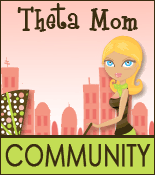Any good checklist for seeking a quality daycare center will mention inquiring about daycare ratios. How many children to how many adults in the room? Each state has its own minimum requirement.
In Massachusetts (one of the better regulated states) where I was a lead teacher in an infant room, the ratio was three infants to one adult or a maximum of seven infants to two adults. Of course most daycare centers will opt for the maximum because they are, after all, a business.
Did you ever watch Jon and Kate cope with their eight infants? Between feeding, diapering, and holding, they needed a team of volunteers to keep their household running. Maybe seven infants to two adults is easier? Think again.
The truth is that there is often just one adult per six children for a majority of the time.
Why? In daycare centers, infants/toddlers are required to have a diaper change every two hours. Diapering in a daycare center is much more complicated than at home:
- Diapering area is often separated from main play/floor area by a gate or door
- Caregiver notes time of diaper change and puts on rubber gloves
- Each child has their own personal supply of diapering items to be retrieved from cabinets or drawers
- Daycare children usually have on footwear, which needs to be removed and reassembled if the child is wearing jeans or fitted clothing, especially if there is a BM involved
- After child has been diapered and brought back to the others, the caregiver must return to area to dispose of diaper/gloves and changing sheet paper, wash area with disinfectant, and lay down a new paper before retrieving the next child to be diapered.
This process takes at least 8 minutes per child in even the most efficient operations, unless clothing is wet or soiled and the child must be changed into a new outfit.
Let's do the math: 8 minutes x 7 children = 56 minutes that one caregiver is alone with the other 6 children.
One hour later, the whole process begins again with the first child that was diapered! In between diaper changes, there are bottles, highchair feedings, naps, and playtime. This is an amazing feat considering state regulations require caregivers to individually hold babies when they drink from bottles and many infants need to be rocked or held before napping. Trust me when I tell you that two sets of hands are not enough for seven infants in a childcare room following these state regulations and ratios.
You might have thought it was okay that your child was receiving 1/3 of an adult's daily attention, but what if they are actually getting by with only 1/6 of an adult's daily attention a majority of the time?
How to Find out the True Teacher to Child Ratio of a Prospective Daycare?
--Rather than being content with knowing the center's ratio, you might want to ask about the diapering process:
How often are children diapered?
Who does the diapering?
(If it is one person or the team rotates, how many adults are left with the other six children?)
--Make More than One Visit to Observe the Infant Room Before Deciding:
Most centers arrange times to talk to teachers during children's nap times, so the teacher will have time to devote to your questions. However, this is often misleading, because this is the most calm part of the day. With lullabies playing softly on the stereo, it might appear to be the perfect environment.
If you like the center after talking with the staff, ask if you can stop in another time or two to observe only. Ask to come between 11:00 AM and 12:00 PM when lunch time is in full force or 3:00 PM to 4:00 PM when children are up and about, just to get an idea of what it is truly like at different times. Only arrange these observations with the understanding that teachers will NOT have time to talk to you during these peak care hours.
Nanny's Note: I have worked and interned in a variety of daycare centers. I believe this ratio issue is one contributing factor to daycare staff burn out and turnover. I found many center environments unsafe and chaotic due to ratio issues.
I'd be very interested to hear from other caregivers with similar or very different experiences. Parents - what do you think?


























































